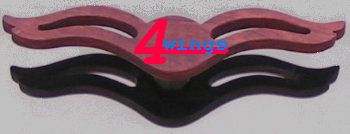| DESIGN SEQUENCE
The first action when designing a skirt is to decide
upon the main use to which you will put the hovercraft and the type of
terrain over which you intent to operate it. For a cruising craft
that will be operated over water you will probably opt for the smooth
but stable ride of the bag and finger skirt.
If you fancy
yourself as the driver of a racing hovercraft you may choose the full
finger skirt which has very low drag characteristics or maybe a
straight bag skirt if racing on terrain where hull damage would
otherwise occur if a soft skirt were used.
The next step is
to develop a section through the side skirt geometry, deciding
where to put the hull structure to pick up the skirt and remembering
the hydro-dynamics of the hull form.
The skirt and the hull shape
must be designed together.
Finger skirt hulls generally have rounded corners
whereas those fitted with bag skirts usually have square or angular
ones. At this point in designing a hovercraft a great deal of
variation in the exact shape and size of the skirt and structure can be
considered until the happy medium is found.
The bow shape can now
be developed in a similar way. The final stage is the development of
the tailoring, splitting it into a sensible number of panels which,
when sewn or glued together, adopt the shape required.
These
panels should be sufficient in number to enable the skirt to look
smooth and free from stress when it is inflated. There should,
however, be few enough panels to make construction of the skirt fairly
simple and straightforward. Finally, you must decide on the type
of material.
4wings Main page
- 4wings Yachtservice - Kite-sailer.com - Site-map
|

